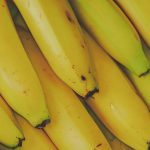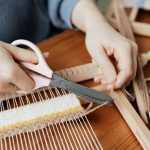You depend on the abaca fiber industry more than you might realize, from the ropes securing cargo ships to eco-friendly products shaping sustainability. The Philippines, especially regions like Bicol and Eastern Visayas, leads global production, supporting thousands of smallholder farmers and boosting the economy through exports. Government programs and innovations are improving yields and quality, tackling challenges like pests and climate change. Exploring deeper reveals how this industry powers rural livelihoods and drives future growth.
Table of Contents
Key Takeaways
- The Philippines is the world’s top producer of abaca fiber, with key regions like Bicol, Davao, and Eastern Visayas driving production.
- The abaca industry provides vital income and employment for thousands of rural Filipino farmers and workers.
- Abaca fiber exports significantly contribute to the national economy and global trade revenues.
- Government programs support farmers with loans, training, quality standards, and export incentives to enhance competitiveness.
- Innovations and sustainable practices improve fiber quality, increase yields, and open new international market opportunities.
Historical Background of Abaca Fiber in the Philippines
Although abaca fiber has been an essential part of the Philippines’ economy for centuries, many people don’t realize how deeply rooted its history is in the country’s culture and trade.
When you look back, you’ll see that abaca, also known as Manila hemp, was cultivated by indigenous Filipinos long before Spanish colonization. You can trace its importance to early trade networks, where abaca ropes and textiles were highly prized by neighboring Asian countries.
As you explore further, you’ll find that during the Spanish era, abaca became a significant export, fueling the economy and connecting the Philippines to global markets.
Key Regions for Abaca Cultivation
You’ll find that the key regions for abaca cultivation are mainly in the Bicol Region, Davao, and Eastern Visayas.
These areas provide the ideal climate and soil conditions that help abaca thrive.
Understanding why these regions stand out can give you a clearer picture of the industry’s success.
Major Abaca Producing Areas
The Philippines boasts several key regions that lead the country’s abaca fiber production, with five provinces standing out for their high yield and quality.
If you look at Bicol, particularly Catanduanes, you’ll see it consistently ranks as the top producer, supplying over half of the nation’s abaca fiber.
Next, Davao Oriental in Mindanao follows closely, known for its robust plantations.
Sorsogon and Samar also contribute considerably, offering fibers prized for strength and length.
Finally, Northern Mindanao rounds out the list with growing production capacity.
When you focus on these areas, you’re tapping into the heart of the abaca industry, where local farmers have honed their cultivation for decades, ensuring the fibers meet both domestic and international demand efficiently.
Regional Climate and Soil
Because abaca thrives best under specific environmental conditions, understanding the regional climate and soil in key producing areas is vital for successful cultivation.
You’ll find that abaca grows ideally in warm, humid climates with annual rainfall between 2,000 to 3,000 millimeters. Regions like Bicol, Eastern Visayas, and Davao provide this perfect environment.
The soil plays an essential role too—you need well-drained, loamy to sandy soils rich in organic matter to support healthy plant growth.
Avoid heavy clay or waterlogged soils since they hinder root development and fiber quality.
Economic Impact of the Abaca Industry
Abaca fiber fuels significant economic growth in the Philippines, providing livelihoods for thousands of farmers and workers nationwide.
When you engage with the abaca industry, you tap into a key sector that boosts rural economies and supports small-scale farmers. The industry contributes substantially to export revenues, making the Philippines the world’s leading abaca producer.
By cultivating and processing abaca, communities improve their income levels and reduce poverty. You’ll find that this industry also stimulates related businesses, such as transportation and manufacturing.
Plus, government initiatives aim to enhance production and market access, ensuring you benefit from sustainable growth.
Traditional and Modern Uses of Abaca Fiber
You’ll find that abaca fiber has long been used in traditional crafts like rope making and weaving.
Today, it’s also essential in modern industries, including automotive and packaging.
Let’s explore how these uses connect the past with the present.
Traditional Abaca Applications
Natural fiber has long shaped Filipino culture and industry, especially through its traditional applications.
When you explore abaca’s role, you’ll see how Filipinos have woven it into everyday life for centuries. You rely on abaca fibers to create sturdy ropes essential for fishing and farming. You use its strong, water-resistant qualities to craft traditional textiles like malong and barong Tagalog, which carry cultural significance.
You’ll also find abaca in mats, hats, and handicrafts, showcasing its versatility in local communities. Its natural durability and flexibility make it perfect for these uses without needing modern processing.
Contemporary Industrial Uses
The Philippines continues to innovate by integrating abaca fiber into modern industries while honoring its traditional roots.
You’ll find abaca used not only in rope and handicrafts but also in high-tech composites for automotive and aerospace applications. Its natural strength and biodegradability make it ideal for eco-friendly products like furniture, paper, and textiles designed to reduce plastic waste.
You might be surprised to learn that abaca fibers enhance the durability of brake pads and insulation materials, showcasing its versatility.
As you explore contemporary uses, you see how the industry supports sustainability goals and boosts the economy.
Role of Smallholder Farmers in the Industry
Smallholder farmers form the backbone of the abaca fiber industry, cultivating most of the crop across the Philippines. When you look at the fields, you’ll see these farmers managing their plots with care, often using traditional methods passed down through generations.
Their hands-on approach guarantees the quality and sustainability of abaca fibers. You rely on their expertise to maintain the crop’s resilience against pests and changing weather. Without their dedication, the industry wouldn’t thrive as it does today.
They also play a crucial role in local economies, providing livelihoods for thousands of families. By supporting smallholder farmers, you help preserve an essential cultural heritage while sustaining a critical economic resource that benefits the entire country.
Export Markets and International Demand
You’ll find that the Philippines exports abaca fiber mainly to Japan, the US, and Europe.
These markets constantly shift based on global demand and sustainability trends.
Understanding where your fiber goes helps you anticipate changes and seize new opportunities.
Key Export Destinations
Although abaca fiber originates in the Philippines, its demand stretches far beyond the archipelago’s shores. You’ll find it exported mainly to countries where its durability and water resistance are highly valued. These key export destinations drive the industry’s growth and sustain local livelihoods.
Here’s a quick look at the top countries importing abaca fiber from the Philippines:
| Country | Primary Use |
|---|---|
| Japan | Specialty paper, textiles |
| United States | Rope, automotive components |
| China | Textiles, industrial materials |
| South Korea | Packaging, eco-friendly products |
| Germany | Composite materials, paper |
Knowing these key markets helps you appreciate the global reach and importance of Philippine abaca fiber.
Global Market Trends
The global demand for abaca fiber continues to rise as industries seek sustainable and durable materials.
You’ll notice that major markets like Japan, the United States, and Europe consistently import large volumes, driven by abaca’s strength and eco-friendly nature.
As green manufacturing grows, so does international demand for abaca in automotive parts, paper products, and textiles.
You can expect emerging markets in Asia and North America to increase their consumption, too.
Trends also show a shift toward value-added products, like abaca composites, which fetch higher prices.
If you’re involved in the industry, staying updated on these market shifts helps you capitalize on new opportunities and maintain the Philippines’ position as the world’s leading abaca supplier.
Challenges Facing the Abaca Sector
While the abaca fiber industry holds great promise, it faces several significant challenges that you should be aware of.
These obstacles can impact production, quality, and profitability, making it essential for you to understand them thoroughly.
- Pests and Diseases: Abaca plants are vulnerable to diseases like bunchy top virus, which can drastically reduce yields.
- Climate Change: Unpredictable weather patterns and natural disasters threaten crop stability.
- Labor Shortages: Many farmers struggle to find skilled workers for planting and harvesting.
- Market Fluctuations: Price volatility in global markets can affect your income and investment decisions.
Recognizing these challenges helps you prepare better strategies to sustain and grow your involvement in the abaca sector.
Government Policies and Support Programs
Because the abaca fiber industry plays an essential role in the Philippine economy, the government has put various policies and support programs in place to help you overcome challenges and boost productivity.
You can access financial assistance through low-interest loans and subsidies aimed at small-scale farmers. The Department of Agriculture offers training programs to improve your farming techniques and fiber processing skills.
Additionally, the government enforces quality standards to guarantee your products meet both local and international market demands. You’ll find export incentives that encourage you to expand your reach globally.
Through these combined efforts, the government supports you in sustaining the industry’s growth, enhancing competitiveness, and securing the livelihoods of communities dependent on abaca cultivation.
This backing strengthens your ability to navigate market fluctuations and environmental risks effectively.
Innovations and Technological Advancements
As you embrace modern methods, innovations and technological advancements are transforming the abaca fiber industry in the Philippines.
These improvements boost productivity and quality, helping you meet global demand with greater efficiency. New technologies also reduce labor intensity and open up new market opportunities.
Key innovations include:
- Mechanical decorticators that speed up fiber extraction
- Improved seed varieties for higher yield and disease resistance
- Advanced retting techniques that enhance fiber quality
- Digital platforms connecting farmers directly with buyers
Environmental Sustainability and Abaca Farming
Even though abaca farming has long been an essential part of the Philippine economy, you can further enhance its impact by adopting environmentally sustainable practices. By minimizing chemical use, conserving soil, and protecting biodiversity, you help guarantee abaca farming remains productive and eco-friendly. Sustainable methods also reduce environmental damage and support community health.
| Practice | Benefit | Actionable Tip |
|---|---|---|
| Organic Fertilizers | Healthier soil | Use compost and manure |
| Crop Rotation | Soil nutrient balance | Rotate abaca with other crops |
| Water Conservation | Reduced water waste | Implement drip irrigation |
| Biodiversity | Pest control naturally | Preserve native plants |
Embracing these practices keeps abaca farming sustainable, benefiting both the environment and your livelihood.
Future Prospects and Growth Opportunities
While the abaca fiber industry has deep roots in the Philippines, its future holds exciting growth opportunities that you can tap into.
You can leverage innovations in processing technology to boost fiber quality and output. Expanding into international markets can open new revenue streams and increase demand. Sustainable farming practices will attract eco-conscious consumers, enhancing your brand’s appeal.
Collaborating with research institutions can lead to the development of value-added products like textiles and composites, diversifying your offerings.
Consider these opportunities to grow your abaca business:
- Invest in modern machinery to improve efficiency
- Explore niche markets such as eco-friendly packaging
- Partner with government programs supporting farmers
- Develop export strategies targeting emerging economies
Frequently Asked Questions
How Is Abaca Fiber Processed and Extracted From the Plant?
You won’t believe how abaca fiber’s extracted! First, you strip the outer sheath, then you soak and beat the fibers to separate them. Finally, you dry and bundle them, ready for weaving or export.
What Are the Health Benefits of Products Made From Abaca Fiber?
You’ll find abaca fiber products naturally breathable and hypoallergenic, reducing skin irritation. They also resist bacteria and mold, promoting hygiene. Plus, their durability means you’ll enjoy long-lasting, eco-friendly health benefits every day.
Can Abaca Fiber Be Used in Fashion and Textile Design?
Why settle for ordinary fabrics when abaca fiber offers unique texture and durability? You can definitely use it in fashion and textile design, creating eco-friendly, stylish pieces that stand out and last longer than traditional materials.
How Does Abaca Fiber Compare to Other Natural Fibers Like Hemp or Jute?
You’ll find abaca fiber stronger and more flexible than hemp or jute, making it ideal for textiles needing durability. It’s also lightweight and resistant to saltwater, giving you unique advantages in certain fashion and design uses.
What Cultural Significance Does Abaca Have in Filipino Traditions?
Ever wonder why abaca’s woven into Filipino heritage? You’ll find it in traditional clothing, rituals, and crafts, symbolizing resilience and connection to nature. It’s more than fiber; it’s a cultural thread that binds communities.
- The Firecracker Tie-Dye Technique Explained - July 13, 2025
- How to Tie-Dye a Star Pattern for Patriotic Shirts - July 13, 2025
- The Geode Tie-Dye Technique: Creating Crystal Patterns - July 13, 2025







